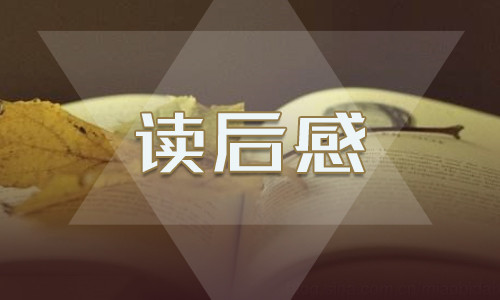答案 AC BD CD BC 三、实验题(本题共2小题,共15分)
13. 答案(1)如右图。(每根线0.5分,四舍五入取整数分) (2)a.向右偏转一下; b.向左偏转一下
14. 答案(1)98.50(2)B(3)15. 答案 (1)1:8 (2)12:1 ,不变
解析:由电路中损失功率P损=P总×5%=I2R得输电线路中电流为
2
.
升压变压器输出电压
根据理想变压器电压比公式得,升压变压器的原、副线圈匝数比为
降压变压器输入功率为
P3=P总-P损=P总-5%P总=95%P总=9.31×10W 所以降压变压器的初级电压为
所以降压变压器的原、副线圈匝数比为
16. 答案 (1)θ=45° (2)B=2.5×10 T 解析 (1)由牛顿第二定律有qE=ma
粒子在电场中水平方向做匀速直线运动,L=v0t 粒子在竖直方向做初速度为零的匀加速运动,射出电场时的竖直分速度vy=at
速度偏转角的正切值tan θ= 由以上各式代入数据解得θ=45° (2)粒子射出电场时运动的速度大小为:
-2
4
vyv0
2
2×105 m/s v=v20+vy=4
v2
在磁场中洛伦兹力提供向心力:Bqv=m
r由几何关系得MN=2r 代入数据解得B=2.5×10 T
-2
Blt0?F?17. 答案 (1)Blt0?-μg? (2) m?m?
解析 (1)设金属杆进入磁场前的加速度大小为a,由牛顿第二定律得:
22
F-μmg =ma ①
设金属杆到达磁场左边界时的速度为v,由运动学公式有:v=at0 ② 当金属杆以速度v在磁场中运动时,由法拉第电磁感应定律,杆中的电动势为
E=Blv ③
??联立①②③式可得E=Blt0?-μg?④
?
(2)设金属杆在磁场区域中匀速运动时,金属杆中的电流为I,根据欧姆定律
F?mEI= ⑤ R式中R为电阻的阻值。金属杆所受的安培力为FA=BIl ⑥ 因金属杆做匀速运动,由牛顿运动定律得F-μmg-FA=0 ⑦
B2l2t0
联立④⑤⑥⑦式得R=。
m
another 后跟单数名词。表示泛指另一个人。后跟带数词的复数名词,表示“再,还要”的意思。other 别的,另外的,一般后跟复数名词或ones ,在other 前可加some, many 或数词,表示“几个,一些别的”Such a tall building such an exciting football match so many peopleeach other相互,彼此,指两个或两个物时。one another 相互,彼此,指三者或三者以上的彼此。one another’s 相互的,彼此的。it—it—its—ts—itself we—us—ur—ours—ourselves they—them—their—heirs—themselves人称顺序you, he, she, I ; we, you, they 主格作主语;宾格作宾语,动词和介词之后通常作宾格;形容词性物主代词不能单独使用,通常放在名词之前;名词性物主代词=形容词性物主代词+名词,“of+名词性物主代词”表示所属关系。A friend of mine我的一位朋友; teacher of hers 她的老代词it 的用法:①指代前面提到过的事物。②表天气。③表距离。④指婴儿和不明身份的人。 ---John, someone in your class phoned you this morning. ---Oh, who was it? ⑤用作形式主语。It’s kind / good / nice /clever /polite / foolish of sb. to do sth.It’s important / necessary / pssible / easy / difficult for sb to do sth, It’s time to get up.
It’s time for lunch. It’s one’s turn to do It seems that It takes sb. some time to do sth. ⑥用作形式宾语。Find / think / feel + it +adj +to do sthIt one的区别It 特指上文提到的同一对象,同一事物。one同类而不同一。that常用于比较结构中,代替前面提到的名词,以避免重复。 反身代词构成规则:一、二物主,三为宾。运用:hurt/ teach/ wash / buy/ enjoy oneself another 后跟单数名词。表示泛指另一个人。后跟带数词的复数名词,表示“再,还要”的意思。other 别的,另外的,一般后跟复数名词或ones ,在other 前可加some, many 或数词,表示“几个,一些别的”Such a tall building such an exciting football match so many peopleeach other相互,彼此,指两个或两个物时。one another 相互,彼此,指三者或三者以上的彼此。one another’s 相互的,彼此的。too much太多的,用法相当于much ,放在不可数名词前。Heath is very important to us. We should eat more vegetables and fruit instead of too much rich food. much too太,用法相当于too, 放在形容词和副词前。Keep quiet! It’s much too noisy here.more than 超过,多于。=over more or less 或多或少,差不多。about at least至少a lot 许多,修饰动词。Thanks a lot. a lot of = lots of 许多的,可修饰可数名词和不可数名词。a number of 许多的,= many 只用于修饰复数形式名词,放在可数名词复数前。every 用于三个或三个以上,着眼于整体。后可跟数词。词组有every ten minuets each 用于两个或两个以上,着眼于个体。词组有ach ofeither 两个中任何一个eier ----or both 两个都 both ---- and --- both of --- neither 两个中一个也没有 e.g. ---Do you like talking with your friends on the telephone or mobile phone? ---Neither, I enjoy using QQ.neither --- nor --- any 三个以上中任何一个al三个以上中全部none 三个以上中一个也没有。 None of --中没有一个,表示三个或以上数目的人或物中没有一个,表否定,作主语时,谓语动词一般用单数。others 表示“泛指”除自己外,别的人。Some ----, others -----the other 表示两个中的另一个。One ----, the other ----the others 表示特指的另一些。another 后跟单数名词。表示泛指另一个人。后跟带数词的复数名词,表示“再,还要”的意思。other 别的,另外的,一般后跟复数名词或ones ,在other 前可加some, many 或数词,表示“几个,一些别的”Such a tall building such an exciting football match so many peopleeach other相互,彼此,指两个或两个物时。one another 相互,彼此,指三者或三者以上的彼此。one another’s 相互的,彼此的。赠送—初中英语总复习知识点归纳代词1、人称代词、物主代词和反身代—me——min—myself you —you—your—yourself (yourselves) h—him—his—his—himself sh—her—her—hers—herself it—it—its—ts—itself we—us—ur—ours—ourselves they—them—their—heirs—themselvesanother 后跟单数名词。表示泛指另一个人。后跟带数词的复数名词,表示“再,还要”的意思。other 别的,另外的,一般后跟复数名词或ones ,在other 前可加some, many 或数词,表示“几个,一些别的”Such a tall building such an exciting football match
so many peopleeach other相互,彼此,指两个或两个物时。one another 相互,彼此,指三者或三者以上的彼此。one another’s 相互的,彼此的。one同类而不同一。that常用于比较结构中,代替前面提到的名词,以避免重复。 反身代词构成规则:一、二物主,三为宾。运用:hurt/ teach/ wash / buy/ enjoy oneself by / Help oneself (one selves) to --- / Look after oneself / Say to oneself Come to oneself2、不定代词 little, a little, few, a few=several(some), some, any much, too much, much too, more then =over, less than= nearlyA little①一点点,表示肯定,用以修饰不可数名词。Only a little 仅一点点.②也可修饰形容词和副词。③一点点,放在动词、动词宾语后。few几乎没有,表示否定意思,用以修饰可数名词。a few=several 几个,一些,表示肯定意思,用以修饰可数名词。some 一些,修饰可数名词,后跟复数形式名词或ones,也可修饰不可数名词。在表示请求、委婉语气的疑问句和表示希望得到对方的肯定回答的问句中,常用some. Could you give me some apples? any 一些,任何一些。一般用于疑问句中或否定句中和F 引导的条件句中。much 许多。修饰不可数名词,放在不可数名词前,可用 lot of 替换。too much太多的,用法相当于much ,放在不可数名词前。Heath is very important to us. We should eat more vegetables and fruit instead of too much rich food. much too太,用法相当于too, 放在形容词和副词前。Keep quiet! It’s much too noisy here.more than 超过,多于。=over more or less 或多或少,差不多。about at least至少a lot 许多,修饰动词。Thanks a lot. a lot of = lots of 许多的,可修饰可数名词和不可数名词。a number of 许多的,= many 只用于修饰复数形式名词,放在可数名词复数前。every 用于三个或三个以上,着眼于整体。后可跟数词。词组有every ten minuets each 用于两个或两个以上,着眼于个体。词组有ach ofeither 两个中任何一个eier ----or both 两个都 both ---- and --- both of --- another 后跟单数名词。表示泛指另一个人。后跟带数词的复数名词,表示“再,还要”的意思。other 别的,另外的,一般后跟复数名词或ones ,在other 前可加some, many 或数词,表示“几个,一些别的”Such a tall building such an exciting football match so many peopleeach other相互,彼此,指两个或两个物时。one another 相互,彼此,指三者或三者以上的彼此。one another’s 相互的,彼此的。another 后跟单数名词。表示泛指另一个人。后跟带数词的复数名词,表示“再,还要”的意思。other 别的,另外的,一般后跟复数名词或ones ,在other 前可加some, many 或数词,表示“几个,一些别的”Such a tall building such an exciting football match so many peopleeach other相互,彼此,指两个或两个物时。one another 相互,彼此,指三者或三者以上的彼此。one another’s 相互的,彼此的。





